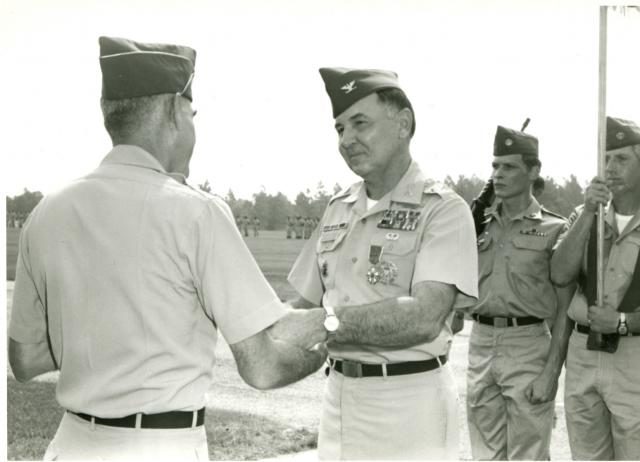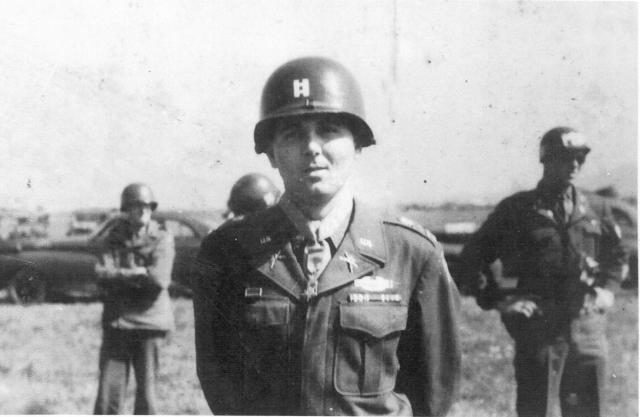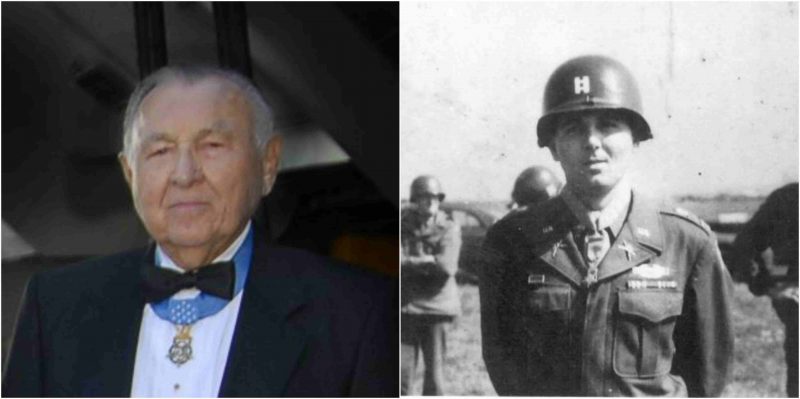Undoubtedly, World War II produced many heroes who stretched the boundaries of human bravery. Some remain uncredited, while others received the highest honors and awards. One of those is the Medal of Honor recipient Charles Murray, who for his heroic actions during WWII received the United States military’s highest decoration.
Charles P. Murray Jr. was born in Baltimore on September 26, 1921. He was recruited by the U.S. Army in 1942, while he was still studying at the University of North Carolina. In October 1944, the 23-year-old lieutenant joined the 3rd Infantry Division and was sent to France. The division had landed in the south part of the country and fought its way north, toward Germany.
By the time the company had arrived in northeastern France, Charles was assigned as a replacement platoon leader. Later, on December 8, due to heavy losses, Charles was given the role of the company commander.

On December 16, 1944, the company was positioned near the village of Kaysersberg. Leading a platoon of 35 soldiers down a narrow mountain path, Charles noticed a group of 200 German soldiers attacking another U.S. battalion. As the Americans were outnumbered, the company leader made a decision to protect his men and pushed toward the German soldiers alone. Using the radio, he then ordered an artillery attack, which was not successful.
Before he could recalculate the correct coordinates, his radio died. Stubborn and determined, Charles Murray decided to take matters into his hands. He launched a grenade attack on the German troops, therefore revealing his position and making himself vulnerable. After using all the grenades, he went back to his platoon, grabbed his rifle, went back to his position, and started shooting at the enemy. The Germans were confused by the frenetic attack and attempted to retreat.
Firing towards the Germans, he killed and wounded many of them, and the rest scattered towards the village of Ammerschwihr.

After the attack, a sergeant from his platoon counted 50 dead German soldiers. Charles Murray and his company managed to capture 10 enemy soldiers, while the eleventh soldier approached the commander with his arms raised and his helmet off.
Pretending that he was surrendering, the soldier threw a grenade at Charles, knocking him to the ground and wounding his leg. Charles, however, forbade his men from killing the soldier. Even wounded, he wouldn’t leave the battlefield until he made sure his men were safe and everything was in order. Charles then passed command to another officer and went to the battalion aid station. He was hospitalized for a while and on December 28, 1944, rejoined his men on the same hill where he left them.

As per the army policy, he was removed from combat and sent to Salzburg. On August 1, 1945, he was awarded the highest military award in the United States Army: the Medal of Honor. Charles found out about his Medal of Honor award when his wife sent him a cutting from the local newspaper with the news. He received the award in Salzburg, surrounded by the entire 3rd Division. One month later, he was sent home to Wilmington, where he was given a hero’s welcome.
Charles soon returned to Europe. He served another four years in Salzburg, where he became the head of U.S. intelligence. Later, he participated in the Korean and the Vietnam wars, rising to the rank of colonel. In 1970, he was transferred to Fort Jackson in South California. In 1973, Charles officially retired from the army, and he worked as a civilian for the South Carolina Department of Corrections. He lived in Columbia, South Carolina, with his wife Anne until his death.
The hero died from congestive heart failure on August 12, 2011.

Besides the Medal of Honor, Murray was awarded two Bronze Stars, three Silver Stars, the Combat Infantryman Badge, and a Purple Heart.
Aside from all these awards, one of the biggest honors he ever received was the naming of a school in his hometown of Wilmington after him: The Murray Middle School.
